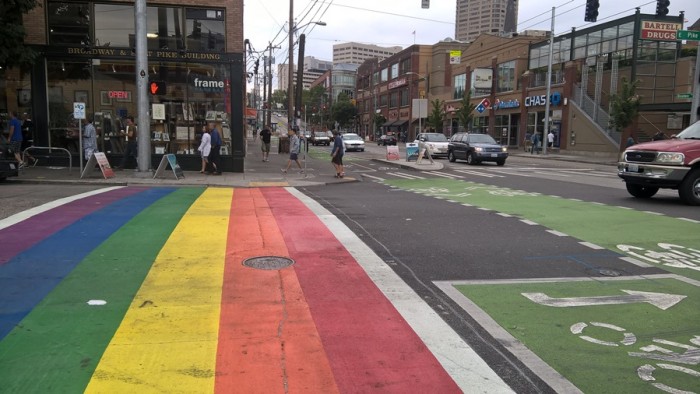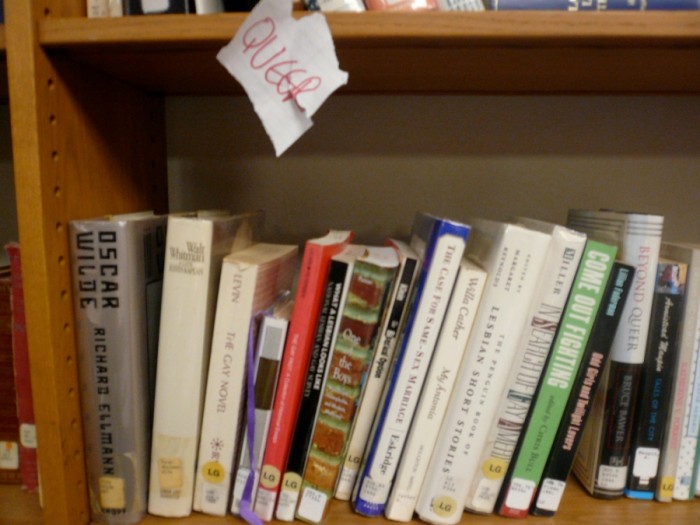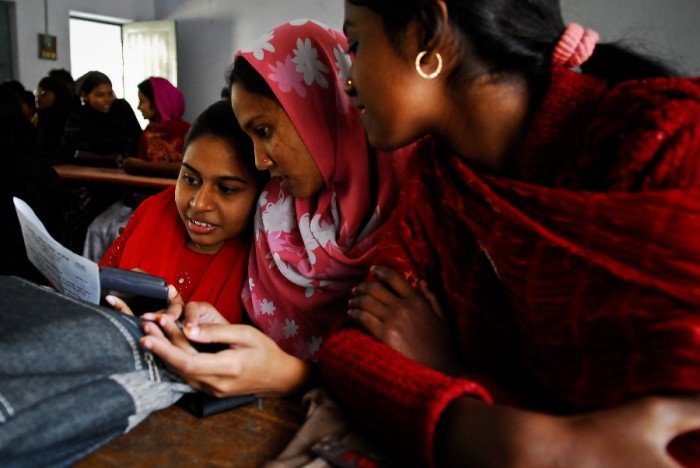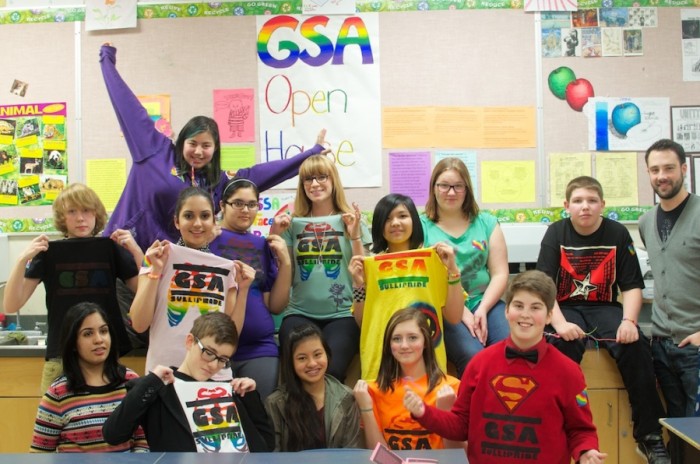
Being from a country where same sex intercourse is yet to be decriminalized and discussion about sexuality and romantic relationships are taboo, getting off the bus at Capitol Hill in Seattle to see rainbow colored crosswalks and posters for the Safe Place Security CampaignCQ made me feel like I’d landed up in an alternate universe. A day after I came to the United States, the Supreme Court legalized marriage equality. People all over the world put rainbow filters on their profile pictures, recognizing the giant step that was taken for human rights on that day. When I called back home to India though, I was faced several negative opinions from LGBTQ people about the general enthusiasm over the ruling. According to many, things are never going to change in India.
It may be quite true that the battle for LGBTQ rights is nowhere near over in any part of the world, the fact remains that USA and Ireland didn’t get where they are today overnight. While Section 377CQ of the Indian Penal Code still criminalizes homosexuality even in this day and age, Ireland, another country that legalized marriage equality earlier this year, didn’t decriminalize homosexuality until 1993CQ.
Fighting for the rights of a minority has never been easy, no matter what part of the world you live in. Instead of throwing in the towel because things are worse in India, I would think that it’s better to look to places that are better off for inspiration. And I really found Seattle, being the queer-friendly city that it is, to be a good place to start.
Educating Yourself

There are no official statistics for the LGBTQ community in India. One can’t imagine that there would be considering it is commonly known fact that most of the people are still closeted. Figures from a 2012CQ survey by the ministry of healthCQ holds that “there are about 2.5 million gays in India,” the figures being based on the people who have self-declared themselves to be gay. Going by that, you can bet that a huge percentage of the population falls under the LGBTQ umbrella, even if they don’t openly identify as so.
A huge concern for adolescents who are growing up queer is the fear of being stereotyped in accordance with the token gay characters we see on television and in the movies; as flamboyant or “butch” comedic devices or as sexual predators. Not to mention, the idea of all gay men having STDs.
While American public schools are criticized for their inadequate and often conservative sex education programs, it’s better than nothing considering students, at the very least, have access to information on how STDs spread and what they are. It might very well surprise the average American how misinformed about such topics an average Indian college graduate might be.

With the state of education and the restrictions on reading material, not many young people have a chance to self-educate. Varun, a film student who chooses to have his real name withheld as he lives in India, had fortunately grown up with the resources to enlighten himself on topics of gender and sexuality. He tries to stay optimistic about the state of education about LGBTQ issues in India. “I know things are bad right now, but I know things will get better,” he said.
Educating Others
22-year-old artist and Seattleite, Drake WilliamsCQ, identifies as pansexual and polyamorous. Having fallen upon hard times recently, he travels and lives on the street with his partner and pet cat. When asked why he deems it wise to ask for help using a sign that says “Feed hungry queers” in a place where plenty of people are still openly homophobic in their ideologies, he says that it doesn’t matter anymore with all the progress society is making and that if someone has prejudices, it is their own job to get over them. “I don’t mind accepting help from someone who looks down on me,” he says, “I’m comfortable in my own skin.” He felt that with the US achieving marriage equality, there is no better time than to be proud of the person you are. Open dialogue about sensitive social issues can be much of the solution to a complex problem.

Not Being Afraid To Look For Friends
While it may just be that easy for some people, being up-front about one’s sexual orientation or gender identity can often cause people to loose friends and damage their relationships in ways they might not be able to handle. But considering it’s something that can help acquire not only much needed support but resources as well, it’s important to seek out safe spaces where one can find people who empathize with them. Schools and colleges in Seattle mostly have GSAs and QSAs to support students. While most colleges in India don’t have such provisions, most cities do have organizations that people can reach out to for support, which is always a good place to start.
Writing/Talking About It
Nina TranCQ, now a university student, was 16 years old when she started working in the student journalism program at KUOW Public RadioCQ. During her time there, she worked on two feature stories, both of them involving LGBTQ issues among the youth. The first story she produced revolved around her best friend who came out as trans while still in middle school. Saying she pursued the story because she felt that it was a topic that needed the exposure, she was unfazed by the criticism it received from a lot of the audience. She later went on to do a story on Catholic school students’ struggle to form GSAs, a story that won several awards. “I wouldn’t say that I’m heavily involved with any sort of LGBTQ organizations or communities,” she said, “It just ends up being that in Seattle, a lot of people are LGBTQ and a lot of your friends end up identifying in that spectrum.” Not considering herself an activist, Tran just went after stories that she found interesting as a journalist and as an ally and ended up drawing attention to important issues.
Establishing an Organization
While Indian colleges such as Jadavpur UniversityCQ and IIT BombayCQ are progressive enough to have LGBTQ organizations on campus, for students of most colleges, even the idea of a similar organization is a far-fetched dream. But like Audrey Long, a former student of Holy Names AcademyCQ, it shouldn’t stop them from trying. The main subject of Tran’s story about GSAs in Catholic schools, Long not only formed an unofficial club on campus, but went on to petition for the establishment of a formal GSA at her school. Her efforts might not have paid off in the way she had hoped, but the visibility she that the issue gained because of her actions definitely got the wheels rolling in the right direction.

What I’ve seen in my few short weeks in Seattle are but some of the ways young people can make a difference in the fight for LGBTQ rights and make their lives a little bit better. The Indian youth, becoming increasingly aware of human rights issues, have some serious work cut out for them. But with the 2014 general electionsCQ having been the biggest voting event in the world till date with a large number of newly eligible voters, one would imagine that the Indian youth is more prepared than ever to take up the necessary initiatives to live in the kind of world that they want.
This story was produced in the 2015 SUSI program.

